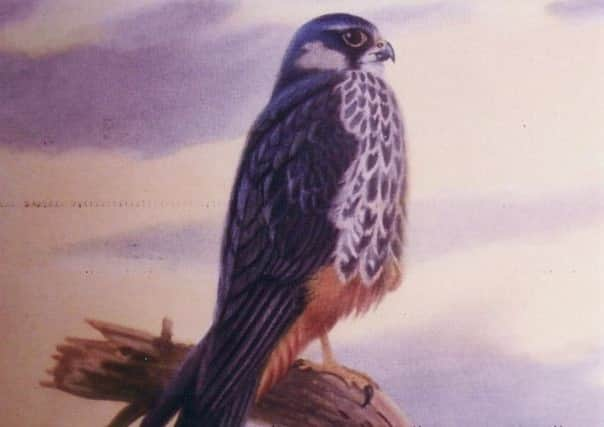Fastest bird in the world fliesby in a flash


A split second, and it was gone. I shut my eyes and nursed the image. I remember reading in an Ian Fleming novel that James Bond did that once in a moment of extremis. Then I began to doubt.
My retina retained the image of a skinny bird with wings like knives, thrashing around a skinny body and a tail like a whip.
Advertisement
Hide AdAdvertisement
Hide AdIt had gone through the garden like the clappers. Every little bird in the area had flattened itself under the bushes and even the long grass.
There was an awed silence where a second before tits and robins, thrushes and pigeons had been happily fighting.
But, the question was, and here very serious bird-watchers will guffaw, had I seen a hobby hurtling past or only a cuckoo?
Even nightjars which are known to nest in these grounds have the skinny bodies of their race, which includes swifts.
Advertisement
Hide AdAdvertisement
Hide AdAll very well when you have a proper view of two or three seconds, but mine was a split second. I have settled on the hobby by now, because I saw it later in the day, wheeling above the oaks like a little peregrine falcon.
Fastest bird in Britain? One of the world’s most famous falconers, the late Philip Glasier, thought so.
He recorded in his memoirs “As The Falcon Her Bells” how he once watched a hobby over the Sussex nature reserve Kingley Vale, near Chichester, showing her youngsters how to catch swifts. The female accelerated beyond both swift and young, climbed high above them all, then dived with extraordinary speed that made the swift seem to be standing still.
“There was no doubt in my mind,” he wrote, “that it was the fastest British bird” Glasier had enjoyed an interesting life among other adventures, showing the Royals how to handle falcons, also film star Robert Taylor on the set of some buccaneering adventure yarn dreamt up by Hollywood.
Advertisement
Hide AdAdvertisement
Hide AdWhat I have seen is hobbys catching butterflies in what looks like a suicide dive to the ground, from 300 feet, and never missing.
In 1788 Gilbert White recorded having seen “Several cuckoos skimming over a large pond feeding on dragonflies which they caught as they settled on the weeds and some as they were on the wing.” It is now thought that the Hampshire clergyman was in fact watching hobby falcons.
This week I watched a hobby, two cuckoos, and a nightjar performing on Iping Common near Midhurst. One has to wonder why evolution gave these three the same sort of speed frame.
Only one uses the aerodynamic shape. See for yourself in the next week or two before adult cuckoos start their long journey back to Africa in late June. The other two should hang on till early autumn.